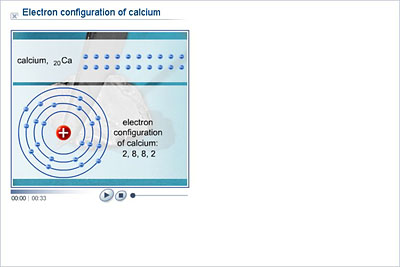

Next two are going to fill the 2s subshell in your second shell. All right, well neon hasĪn atomic number of 10 and if we're talkingĪbout a neutral neon atom it's gonna have 10 electrons. What is the electronĬonfiguration of neon? Pause this video and think about it and as a hint I will give It's a very useful way of thinking about electronĬonfigurations past calcium. Going to expose ourselves to the idea of the Aufbau principle. Get a little bit more practice with electron configuration. In their various subshells that you could find in Videos we introduced ourselves to the idea of orbitals and these are various orbitals So third period elements would like to follow the octet rule, but they're not limited by it like the second period elements are. However elements in the third period have an electron shell which can potentially accommodate eighteen electrons. Elements in the second period don't exceed that eight valance electron limit because their valence shell only holds a maximum of eight electrons. Chlorine in the chlorate ion for example has twelve valence electrons. The third period elements follow the octet for the most part, but you'll find plenty of examples of elements in that row exceeding eight valence electrons.
#CA ELEMENT ELECTRON CONFIGURATION FULL#
So their valence shell is considered full and stable with just two electrons and so follow what is known as the duet rule. They only really make use of the first electron shell which holds a maximum of two electrons. The simplest being the first period elements (hydrogen and helium). The rest of the periodic table is full of exceptions to this octet rule. The second electron shell holds a maximum of eight electrons and its filling creates a stability which elements like to attain.
/ColorPeriodicTableEC-58b5c7fa3df78cdcd8bbb56f.png)
The octet rule applies best to second period elements (second row on the periodic table).

The valence shell being the shell with electrons which participate in chemical reactions and is often the outermost electron shell. So the eight electron idea you're referring to is known as the octet rule which is a general rule that says certain elements like having a valence shell with eight electrons to be stable. The important part is just to be aware of the different energy levels of the subshells when they're unoccupied versus occupied. However I find it easier to write them as 4s3d since it follows the order of the pyramid Sal has in the upper left, so I use that format instead. So technically the electron configurations for elements like scandium or titanium should be written like 3d4s since they are filling those subshells causing the new energy difference as compared to the subshells being unoccupied. Now when filled the 3d subshell would be written first since it has lower energy giving us 3d4s. However once filled, the 3d subshell actually becomes less energetic and has lower energy than the filled 4s orbital. So when the 4s and 3d subshells are unoccupied by electrons the 4s is lower than the 3d subshell so we would fill the 4s first and write it first giving us 4s3d. The problem is when we start filling them for transition metals. So the two ways of writing the electron configurations are having a disagreement about which subshell is lower in energy. So this would mean writing the lower energy subshells further to the left and the higher ones toward the right. When writing electron configurations the aufbau principal says that electron subshells with lower energy should be filled first. The difference arises due to the energy levels of the two subshells. Short answer, technically the more correct way would be to write 3d4s, but it is still acceptable to write 4s3d. There is some debate which way is better, either 4s3d or 3d4s, for describing the electron configurations of transition metals.


 0 kommentar(er)
0 kommentar(er)
